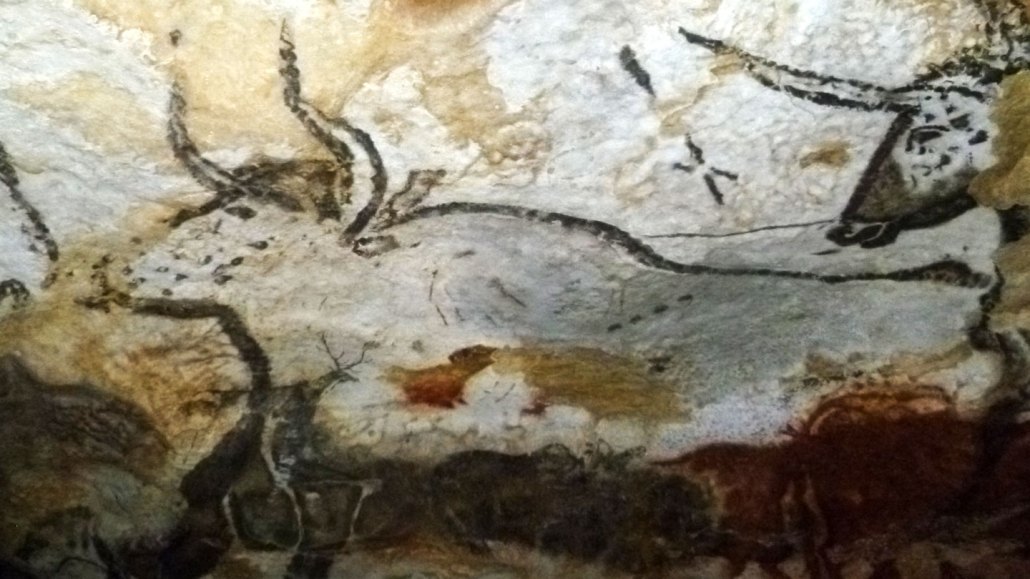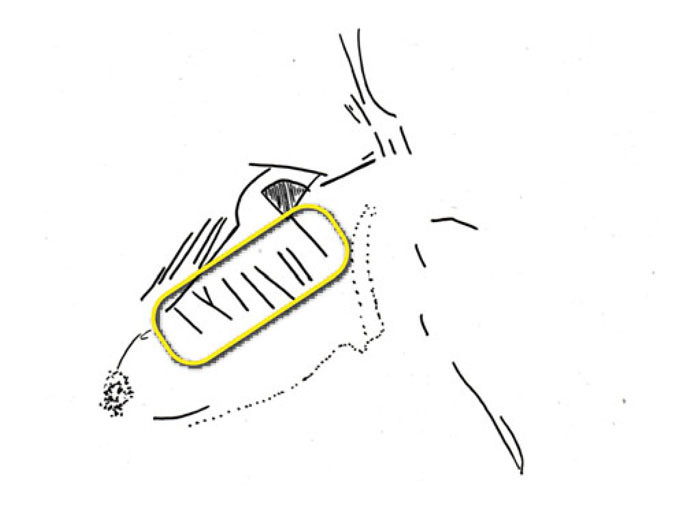Mysterious marks on Ice Age cave art may have been a form of record keeping
The marks might be one of the earliest examples of a coherent notational system

Analyses of patterns in ancient cave markings suggest that the four dots on this animal’s torso indicate that aurochs (similar to modern cattle) mated in the fourth month after the spring snowmelt.
JoJan/Wikimedia Commons (CC BY 4.0)
As far back as roughly 25,000 years ago, Ice Age hunter-gatherers may have jotted down markings to communicate information about the behavior of their prey, a new study finds.
These markings include dots, lines and the symbol “Y,” and often accompany images of animals. Over the last 150 years, the mysterious depictions, some dating back nearly 40,000 years, have been found in hundreds of caves across Europe.
Some archaeologists have speculated that the markings might relate to keeping track of time, but the specific purpose has remained elusive (SN: 7/9/19). Now, a statistical analysis, published January 5 in Cambridge Archeological Journal, presents evidence that past people may have been recording the mating and birthing schedule of local fauna.
By comparing the marks to the animals’ life cycles, researchers showed that the number of dots or lines in a given image strongly correlates to the month of mating across all the analyzed examples, which included aurochs (an extinct species of wild cattle), bison, horses, mammoth and fish. What’s more, the position of the symbol “Y” in a sequence was predictive of birth month, suggesting that “Y” signifies “to give birth.”
The finding is one of the earliest records of a coherent notational system, the researchers say. It indicates that people at the time were able to interpret the meaning of an item’s position in a sequence and plan ahead for the distant future using a calendar of sorts — reinforcing the suggestion that they were capable of complex cognition.

“This is a really big deal cognitively,” says Ben Bacon, an independent researcher based in London. “We’re dealing with a system that has intense organization, intense logic to it.”
A furniture conservator by day, Bacon spent years poring through scientific articles to compile over 800 instances of these cave markings. From his research and reading the literature, he reasoned that the dots corresponded to the 13 lunar cycles in a year. But he thought that the hunter-gatherers would’ve been more concerned with seasonal changes than the moon.
In the new paper, he and colleagues argue that rather than pinning a calendar to astronomical events like the equinox, the hunter-gatherers started their calendar year with the snowmelt in the spring. Not only would the snowmelt be a clear point of origin, but the meteorological calendar would also account for differences in timing across locations.
For example, though snowmelt would start on different dates in different latitudes, bison would always mate approximately four lunar cycles — or months — after that region’s snowmelt, as indicated by four dots or lines.
“This is why it’s such a clever system, because it’s based on the universal,” Bacon says. “Which means if you migrate from the Pyrenees to Belgium, you can just use the same calendar.”
He needed data to prove his idea. After compiling the markings, he worked with academic researchers to identify the timing of migration, mating and birth for common Ice Age animals targeted by hunter-gatherers by using archaeological data or comparing with similar modern animals. Next, the researchers determined if the marks aligned significantly with important life events based on this calendar. When the team ran the statistical analysis, the results strongly supported Bacon’s theory.
When explaining the markings, “we’ve argued for notational systems before, but it’s always been fairly speculative as to what the people were counting and why they were counting,” says Brian Hayden, an archaeologist at Simon Fraser University in Burnaby, British Columbia, who peer-reviewed the paper. “This adds a lot more depth and specificity to why people were keeping calendars and how they were using them.”
Linguistic experts argue that, given the lack of conventional syntax and grammar, the marks wouldn’t be considered writing. But that doesn’t make the finding inherently less exciting, says paleoanthropologist Genevieve von Petzinger of the Polytechnic Institute of Tomar in Portugal, who wasn’t involved in the study. Writing systems are often mistakenly considered a pinnacle of achievement, when in fact writing would be developed only in cultural contexts where it’s useful, she says. Instead, it’s significant that the marks provide a way to keep records outside of the mind.
“In a way, that was the huge cognitive leap,” she says. “Suddenly, we have the ability to preserve [information] beyond the moment. We have the ability to transmit it across space and time. Everything starts to change.”
The debate over these marks’ meanings continues. Archaeologist April Nowell doesn’t buy many of the team’s assumptions. “It boggles my mind why one would need a calendar … to predict that animals were going to have offspring in the spring,” says Nowell, of the University of Victoria in British Columbia. “The amount of information that this calendar is providing, if it really is a calendar, is quite minimal.”
Hayden adds that, while the basic pattern would still hold, some of the cave marks had “wiggle room for interpretation.” The next step, he says, will be to review and verify the interpretations of the marks.







